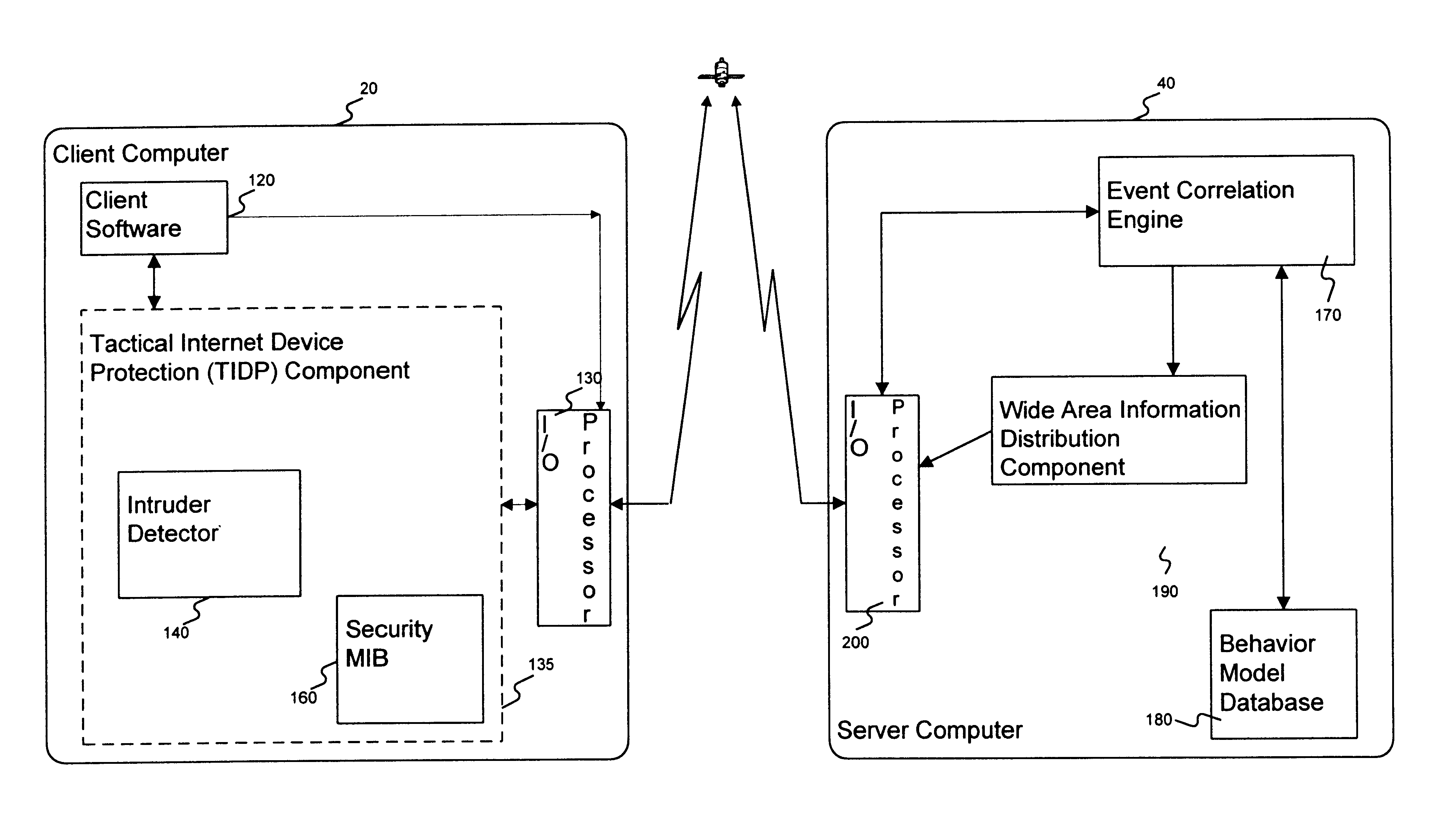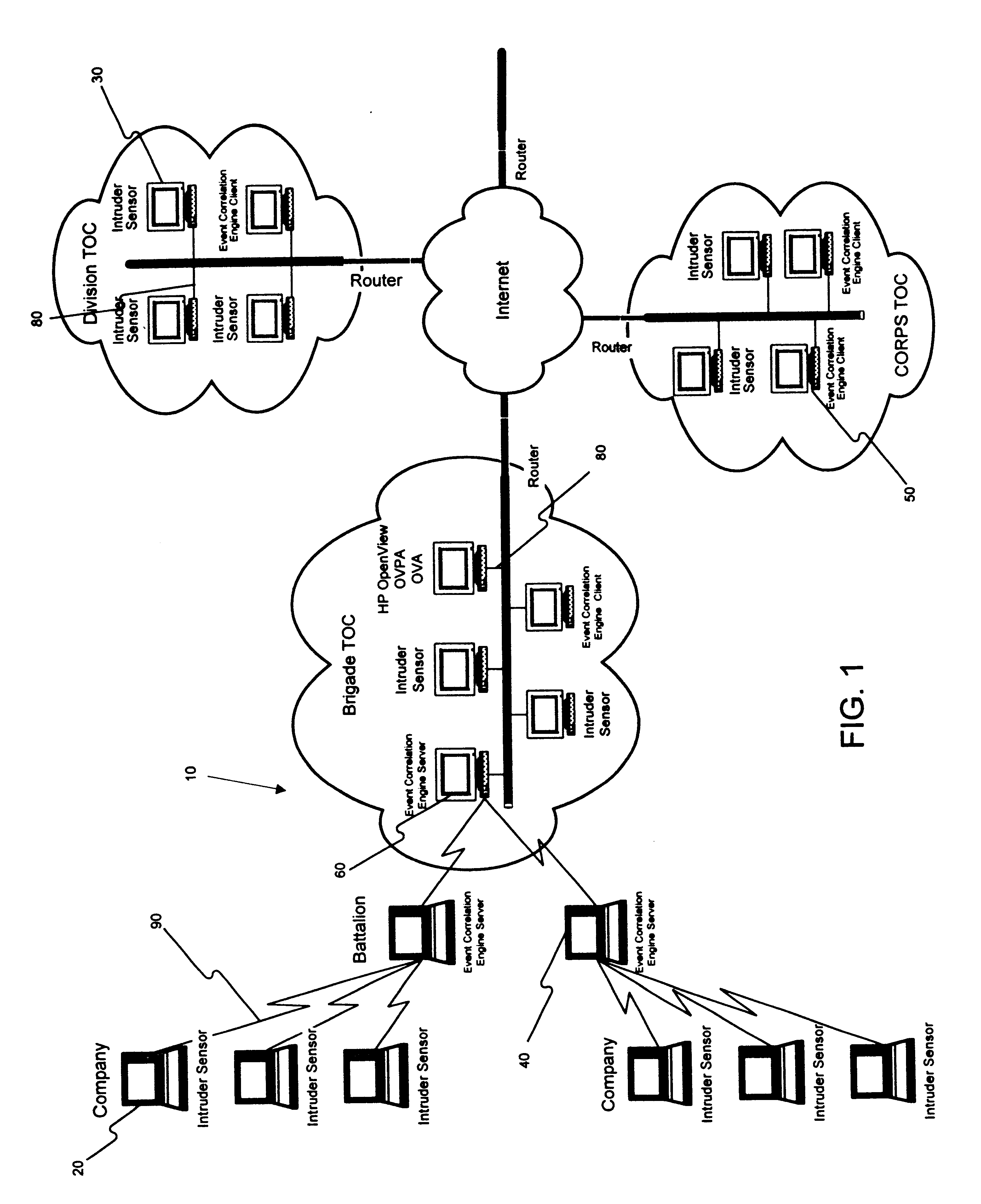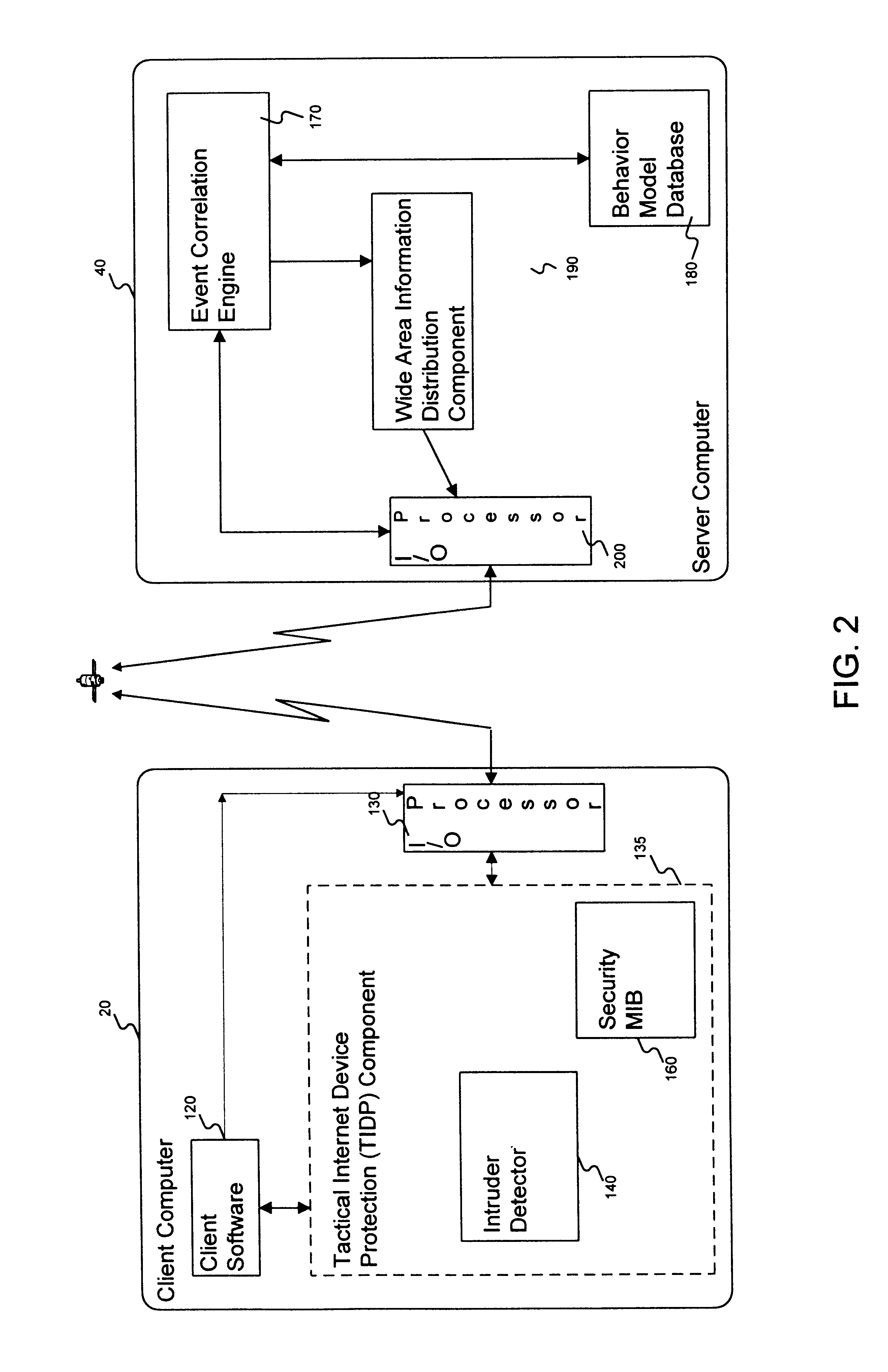Method and apparatus for an intruder detection reporting and response system
a technology of intruder detection and reporting system, applied in the field of distributed computer systems, can solve the problems of increasing transmission errors, deteriorating channel quality, and inability of wireless networks operating at rf frequencies to handle large amounts of data with the same level of efficiency, so as to increase the security of computer networks
- Summary
- Abstract
- Description
- Claims
- Application Information
AI Technical Summary
Benefits of technology
Problems solved by technology
Method used
Image
Examples
Embodiment Construction
System Overview
[0018]A computer system in accordance with the present invention, comprises a plurality of intruder sensor client computers and associated event correlation engines. The event correlation engine may be generally similar to the client computers including a central processing unit, display device and operator input device. Moreover, it will be appreciated that a client computer may also perform operations described herein as being performed by an event correlation engine, and similarly an event correlation engine may also perform operations described herein as being performed by a client computer. The distributed computer system may comprise any one of a number of types of networks over which client computers and server computers communicate, including local area networks (LANs), wide area networks (WANs), the Internet and any other networks that distribute processing and share data among a plurality of nodes.
[0019]In operation, the client computer receives input from a...
PUM
 Login to View More
Login to View More Abstract
Description
Claims
Application Information
 Login to View More
Login to View More - R&D
- Intellectual Property
- Life Sciences
- Materials
- Tech Scout
- Unparalleled Data Quality
- Higher Quality Content
- 60% Fewer Hallucinations
Browse by: Latest US Patents, China's latest patents, Technical Efficacy Thesaurus, Application Domain, Technology Topic, Popular Technical Reports.
© 2025 PatSnap. All rights reserved.Legal|Privacy policy|Modern Slavery Act Transparency Statement|Sitemap|About US| Contact US: help@patsnap.com



